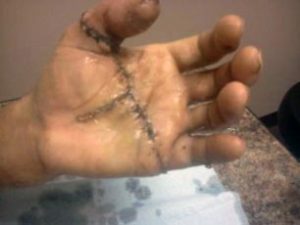 According to the Bureau of Labor Statistics, many workers in the United States are killed each year by contact with equipment or being caught up in operating machinery. Bottom lines is that these deaths could have been prevented.
According to the Bureau of Labor Statistics, many workers in the United States are killed each year by contact with equipment or being caught up in operating machinery. Bottom lines is that these deaths could have been prevented.
Be Alert Working Around or Operating Machinery
The point of operation: That is where the work of the machine takes place. It’s where the pressing, cutting, punching, or boring take place. It’s a place where no part of the body should be. The point of operation may also produce sparks or fragments that can fly toward the operator. Safety glasses are important for this type of work.
The power train: That is where energy is transferred through moving parts like gears, shafts, belts, cable, hydraulic or pneumatic cylinders. No body parts should be in these areas either. Employees should report any missing guards to their supervisor before operating this equipment. The law requires equipment to be turned off and locked out during any maintenance to prevent someone from turning it on unexpectedly.
Workers Should Recognize and Understand the Following When Working Around Machinery:
- The location of machine guards and points of operation;
- The purpose of color-coded machinery alerting workers to hazards and helping to pinpoint missing guards;
- The danger of pinch points and the importance of guards on in-running rolls, belts, pulleys, chains, and sprockets;
- Knowing and following established lockout/tagout procedures;
- Knowing when machines have been shut down for maintenance or to clear jams;
- Assuring that machines remain off while they are shut down for maintenance;
- Knowing and observing electrical safety work practices developed by the company; and
- Understanding the importance of keeping machinery clean to prevent equipment jams.
ALWAYS KEEP YOUR GUARD UP…WHEN WORKING WITH POWERED EQUIPMENT!
Download flyer: STOTW_934-MachineSafety Download Spanish flyer: STOTW_934MachineSafety_esp

